Habitara is a free self-assistant application that helps its users become more productive while ensuring consistency in their daily to-do tasks, thereby enabling them to make the most of their time.
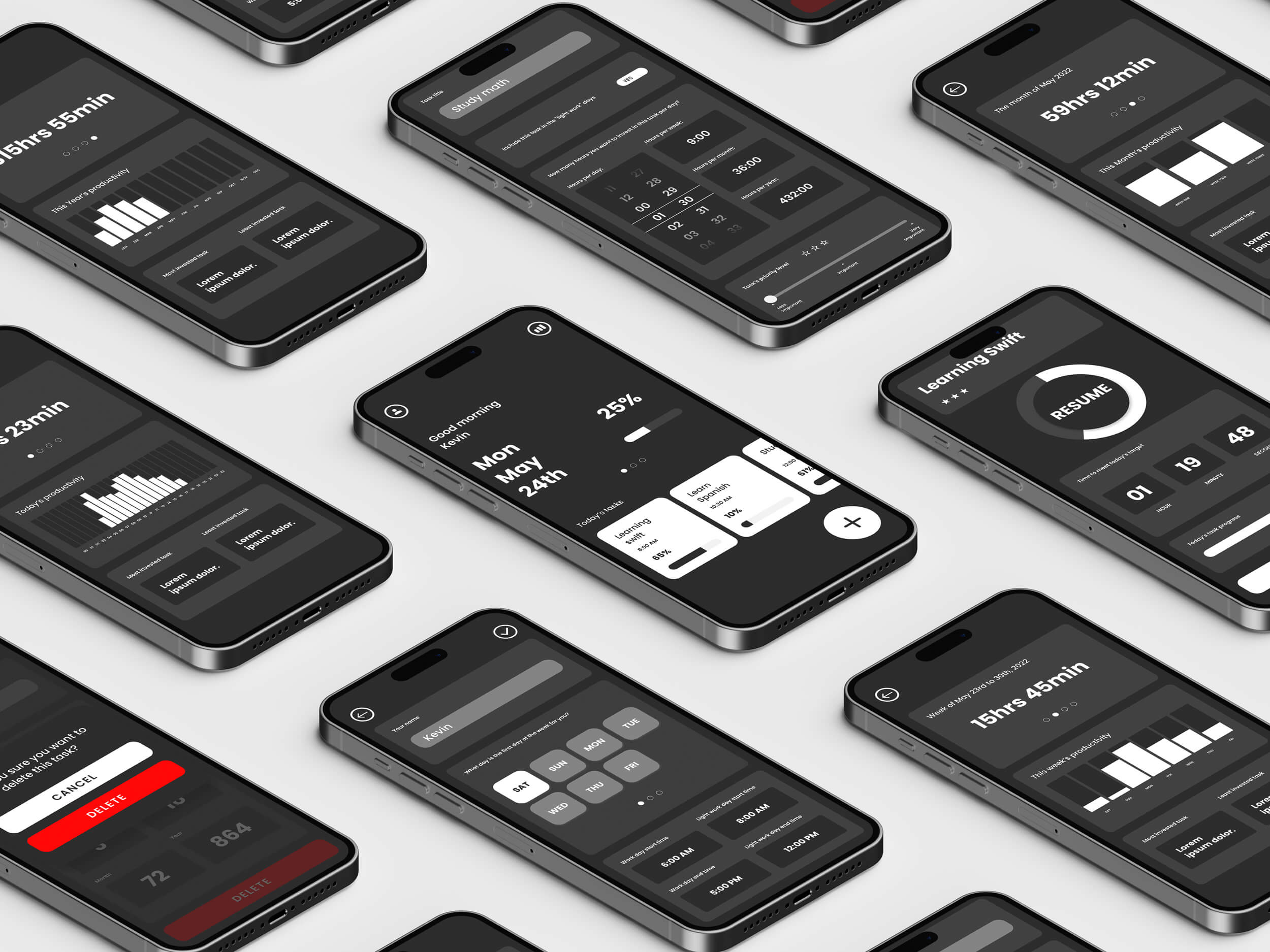
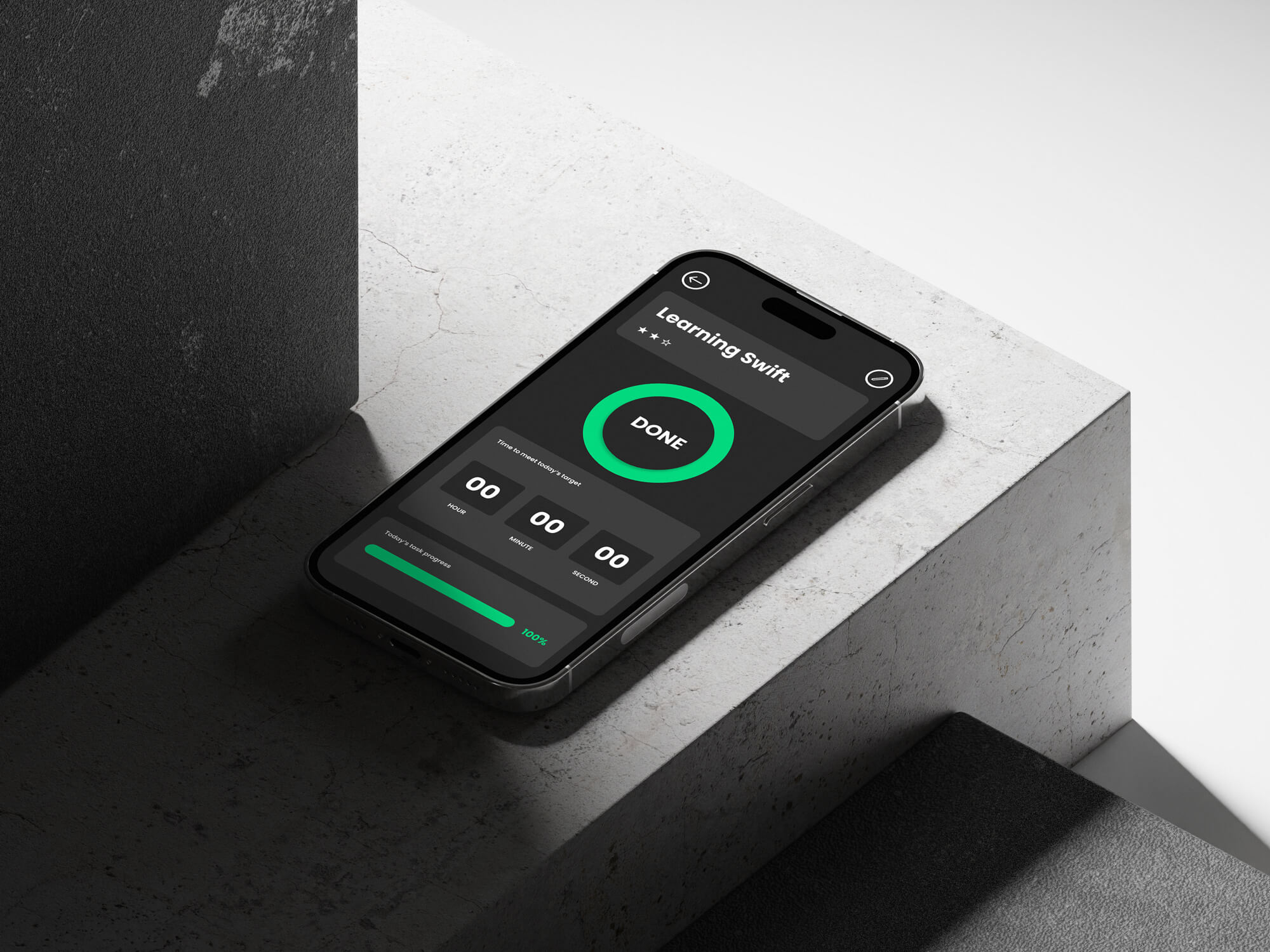
People often find it challenging to maintain consistency and focus while working towards achieving their daily goals.
The aim is to develop a platform that enables individuals to cultivate new habits by creating flexible daily schedules and monitoring their productivity performance.
I conducted several in-person interviews with a diverse group of people, encompassing various age groups, backgrounds, and levels of digital literacy. During these interviews, I asked a series of open-ended questions to gain insights into their unique perspectives and pain points.
Some users believe that they struggle to remain focused on a task because they have too much on their mind simultaneously.
Some users believe that they lack the discipline to maintain consistency every day on a particular task, which leads to incomplete long-term plans.
Busy lives and schedules lead some users to believe that they do not have sufficient time to work on all the tasks they desire.
The majority of users feel that if they were to work on all the tasks they have in mind every day, they would not have sufficient time to spend with their families and personal life.
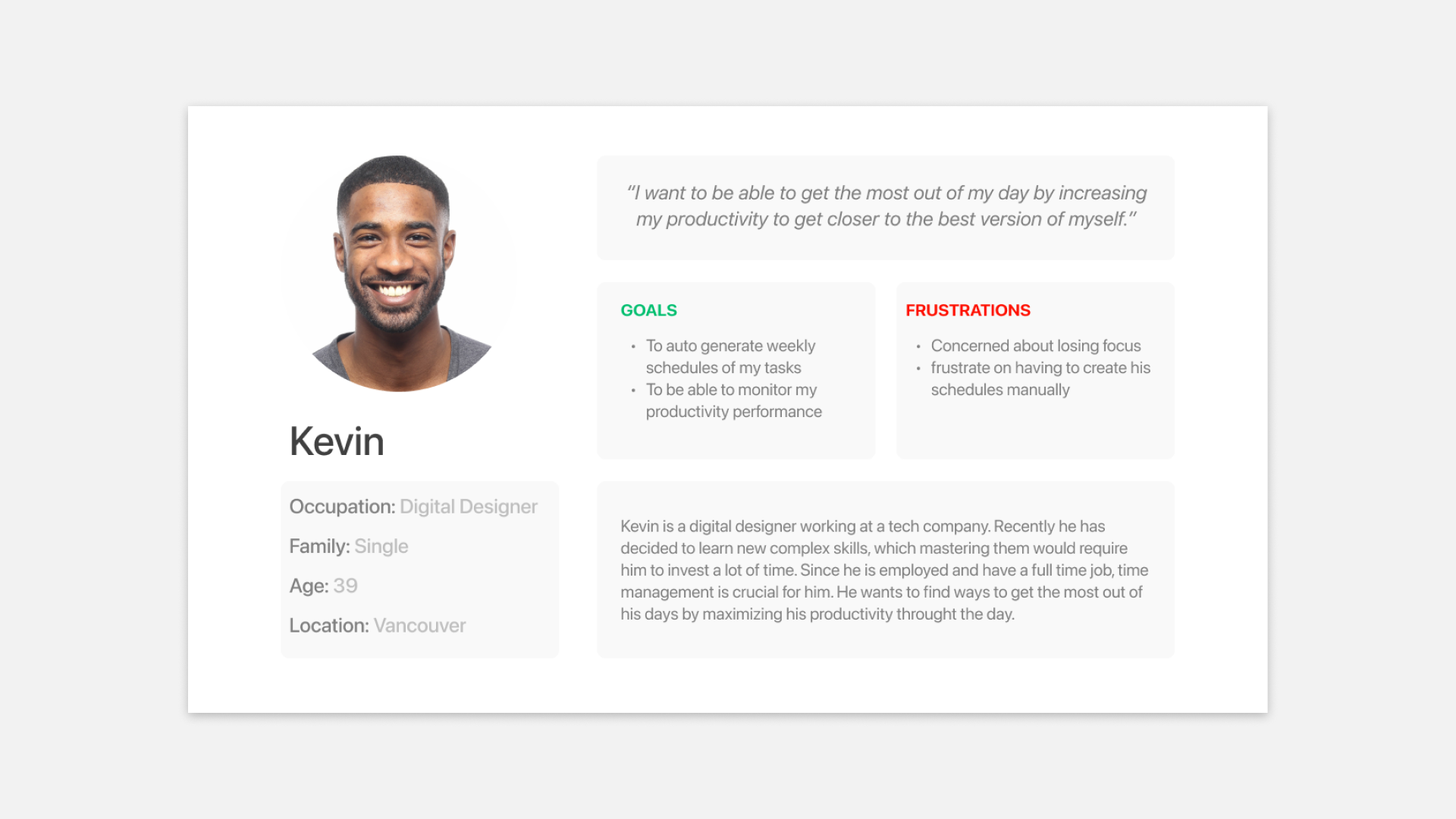
Kevin is a highly motivated individual who needs to increase his productivity as he aims to acquire a complex skill within a limited timeframe.
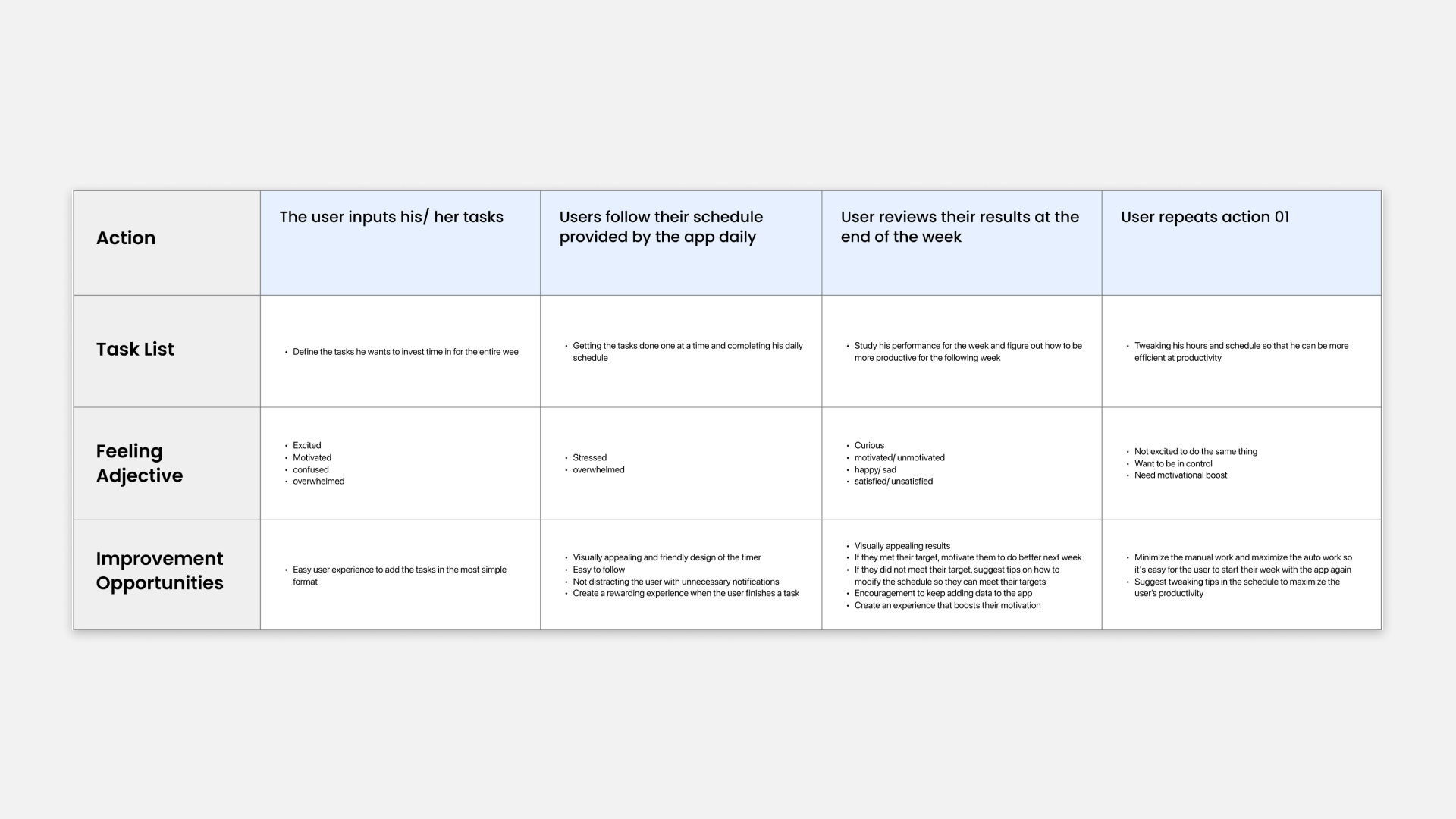
How might we build a platform that assists Kevin in planning his day efficiently so that he can achieve his full potential while making the most of his time?
To build an inexpensive version of the product, I used a spreadsheet to list out the "to-do tasks" for each day and the required amount of time to invest in them. I then planned these tasks for the week, which provided me with a better understanding of the "must-have" and "nice-to-have" features of the solution.
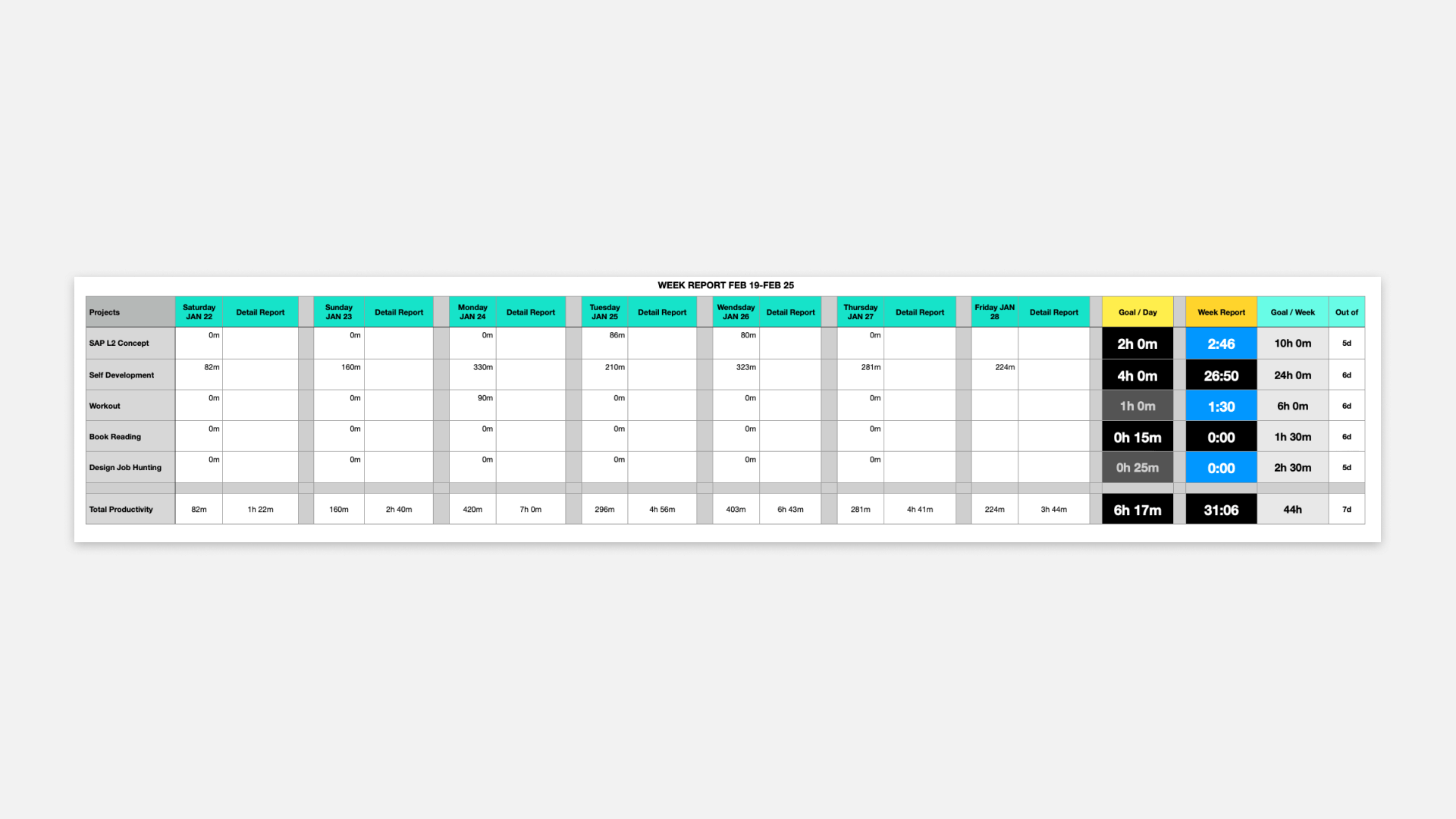
I created the user flow map and outlined the happy path for the user. Additionally, using this user flow map, I compiled a list of all the screens that needed to be designed.
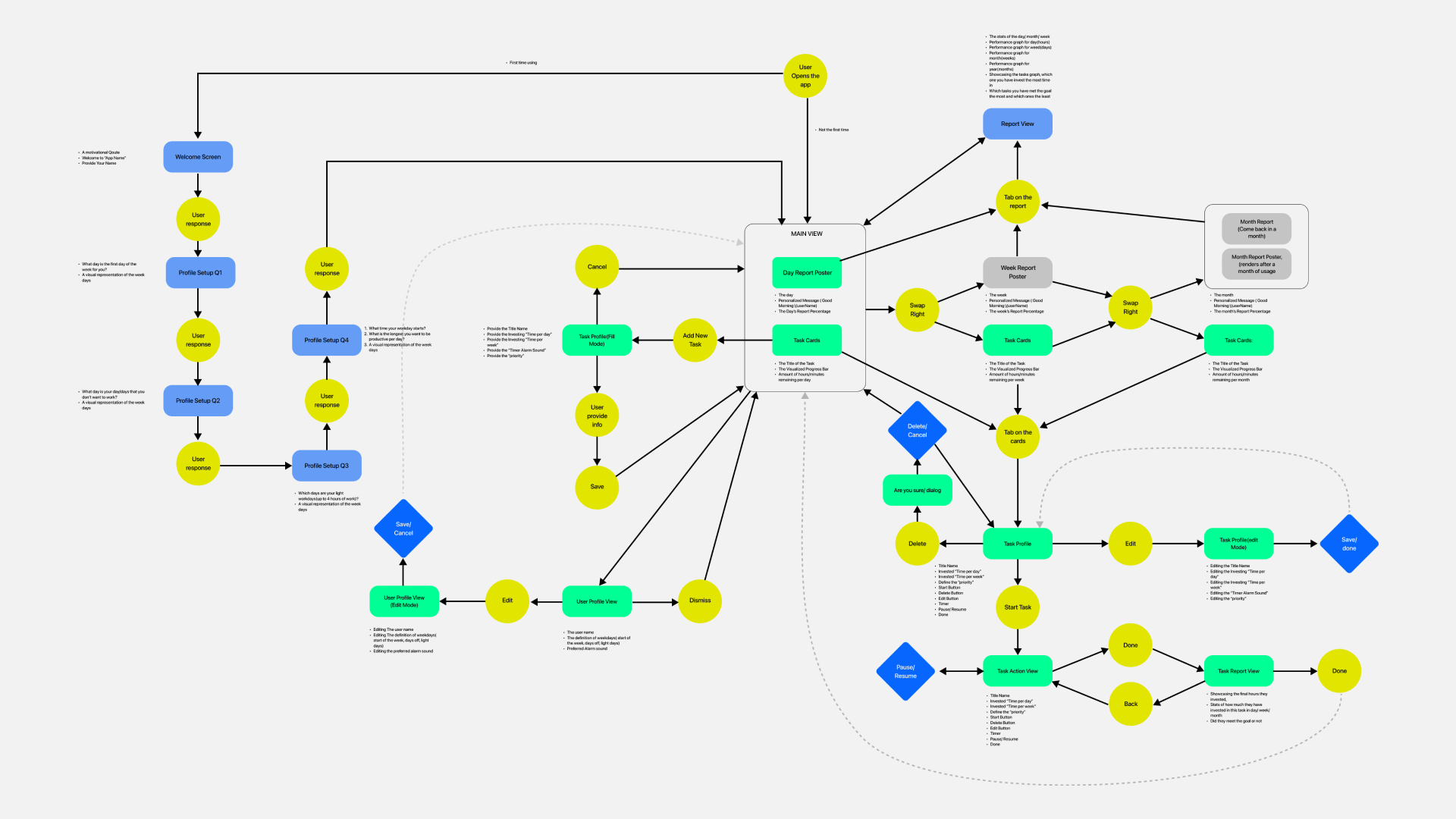
Started with paper wireframes and paper prototype, then performed Usability testing, then modified the designs based on the outcome.

I converted paper wireframes into digital wireframes and developed a low-fidelity prototype. This enabled me to conduct moderated and unmoderated usability testing, which generated more tests and insights. Using the data from the usability testing of the low-fidelity prototype, I then created the mid-fidelity prototype and performed additional testing.
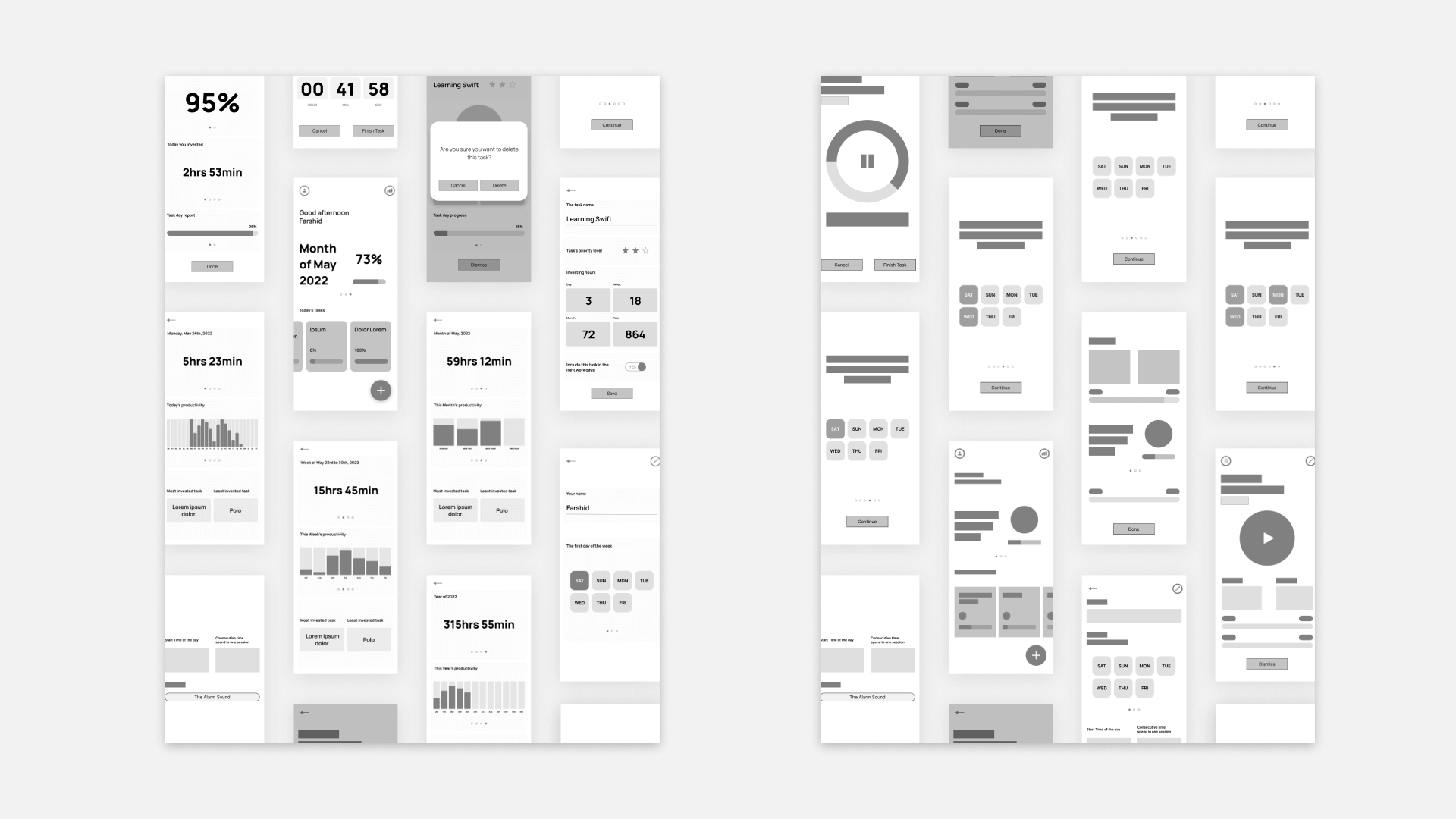
During the usability study, users were asked to create a new task, and feedback indicated that they were unable to locate the tab to do so. Consequently, I re-designed the page, implementing several changes such as adjusting the size and location of the "add task" button. After additional testing, users could easily spot the "add task" button with the new design.
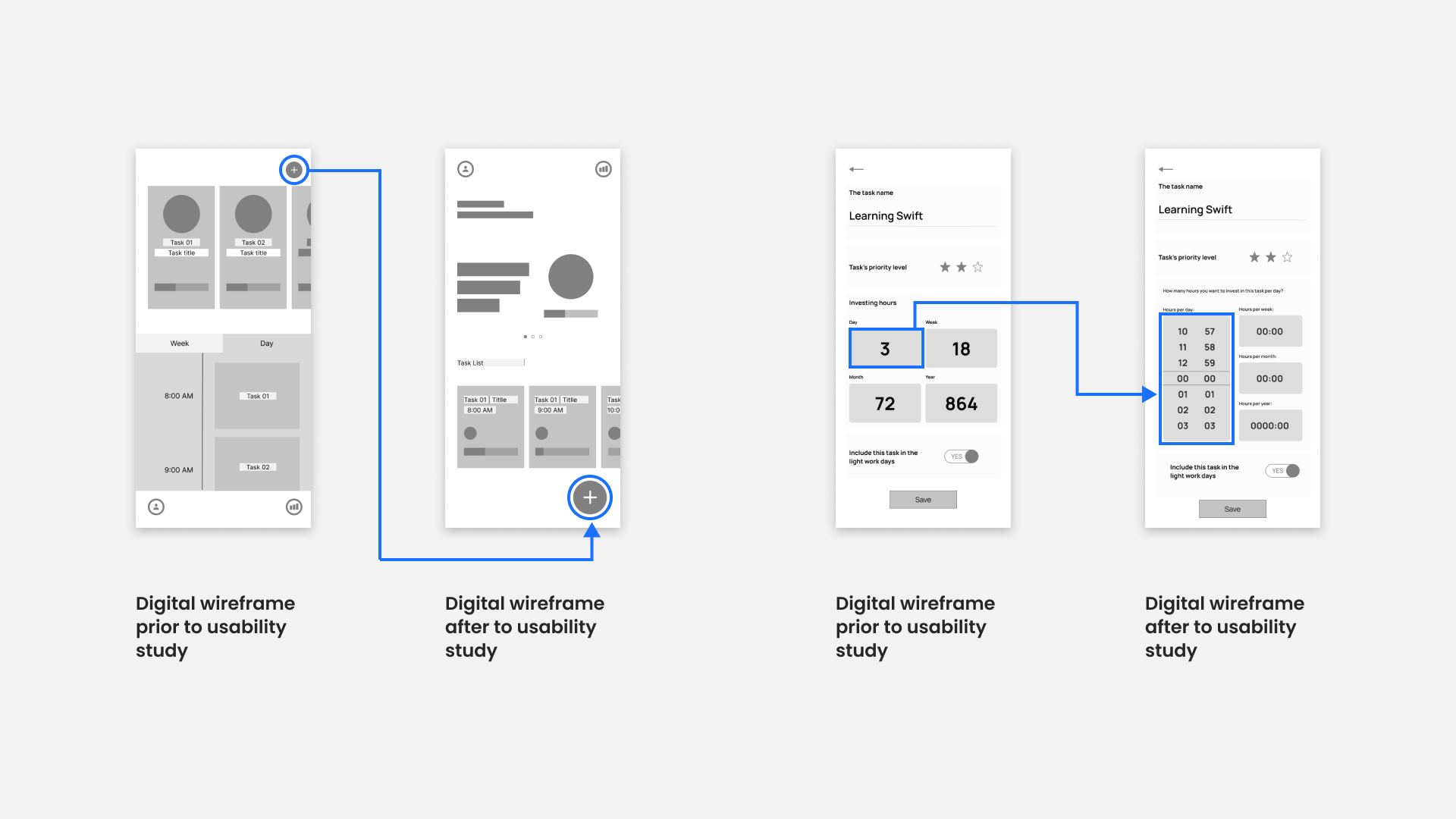
During the usability study, users were asked to indicate how much time they wanted to invest in a particular task, and feedback revealed that it was unclear whether the time indicator on the task profile was editable. Consequently, I re-designed the timer, implementing several changes such as using a different component to showcase the time selector on the page. After additional testing, users found the new design more attractive and easier to use.
I conducted market research and creative research, and created a mood board to define the look and feel of the app based on user needs and a user-friendly experience. I avoided including unnecessary details and graphics, so that users can focus on what matters the most.
This design addresses the challenge of creating a "new task". The goal was to create an experience where users can easily create a new task as soon as they open the app, adding details such as the name, priority level, and time to invest in the task. As the user inputs the time they wish to invest in the task per day, the time for the week, month, and year is auto-generated. Users can also tap on the week, month, or year section to modify the time, while the app auto-generates the other sections based on the user's input.
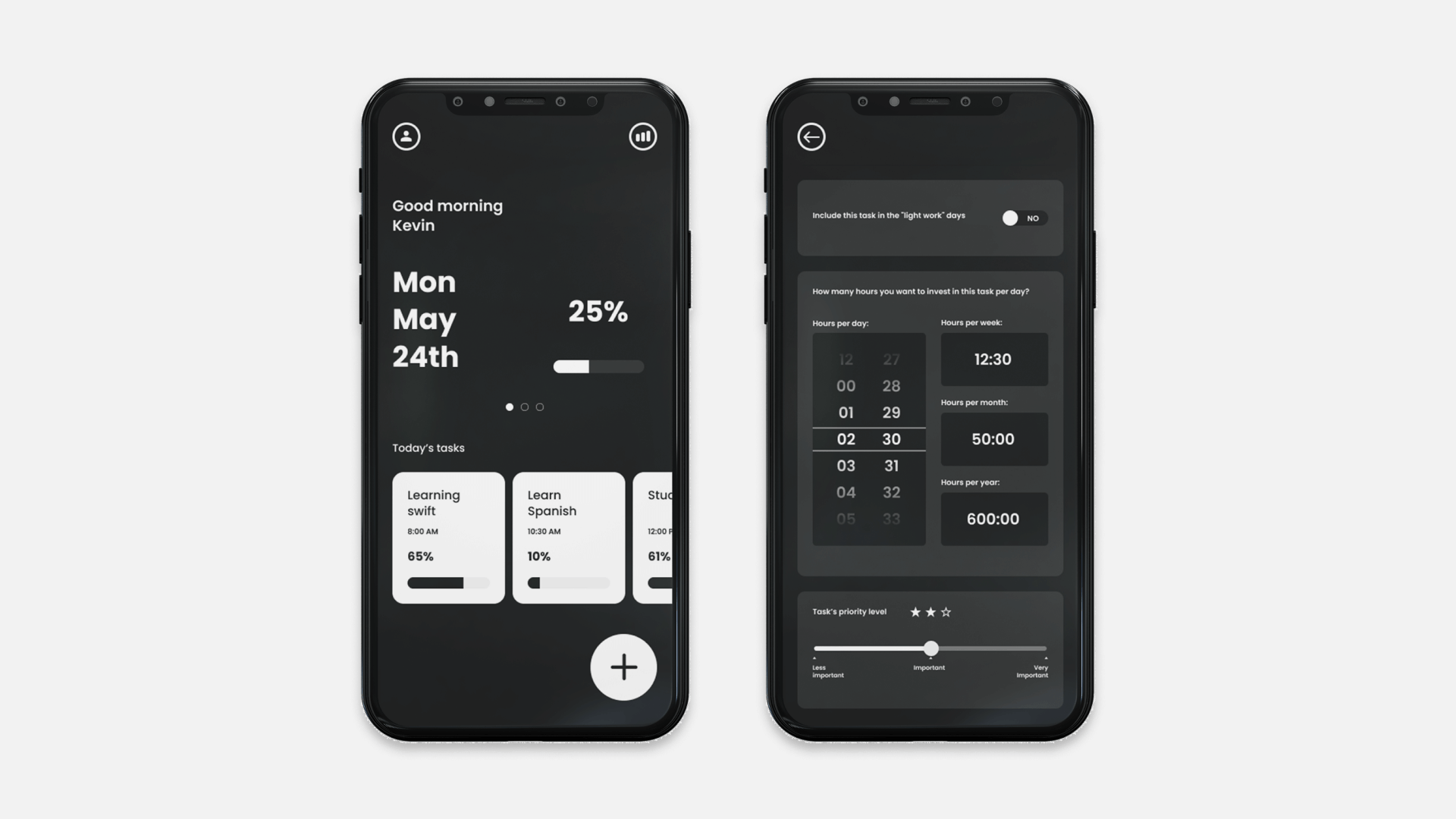
This design addresses the user experience when working on a specific task. When the user taps on the "start" button, the timer will start counting down, and the progress bar will visualize the task completion progress. The goal of this design is to provide motivation for the user to complete their task. When the timer ends, the user can choose to finish the task, continue working on it, or put it on hold to work on later.
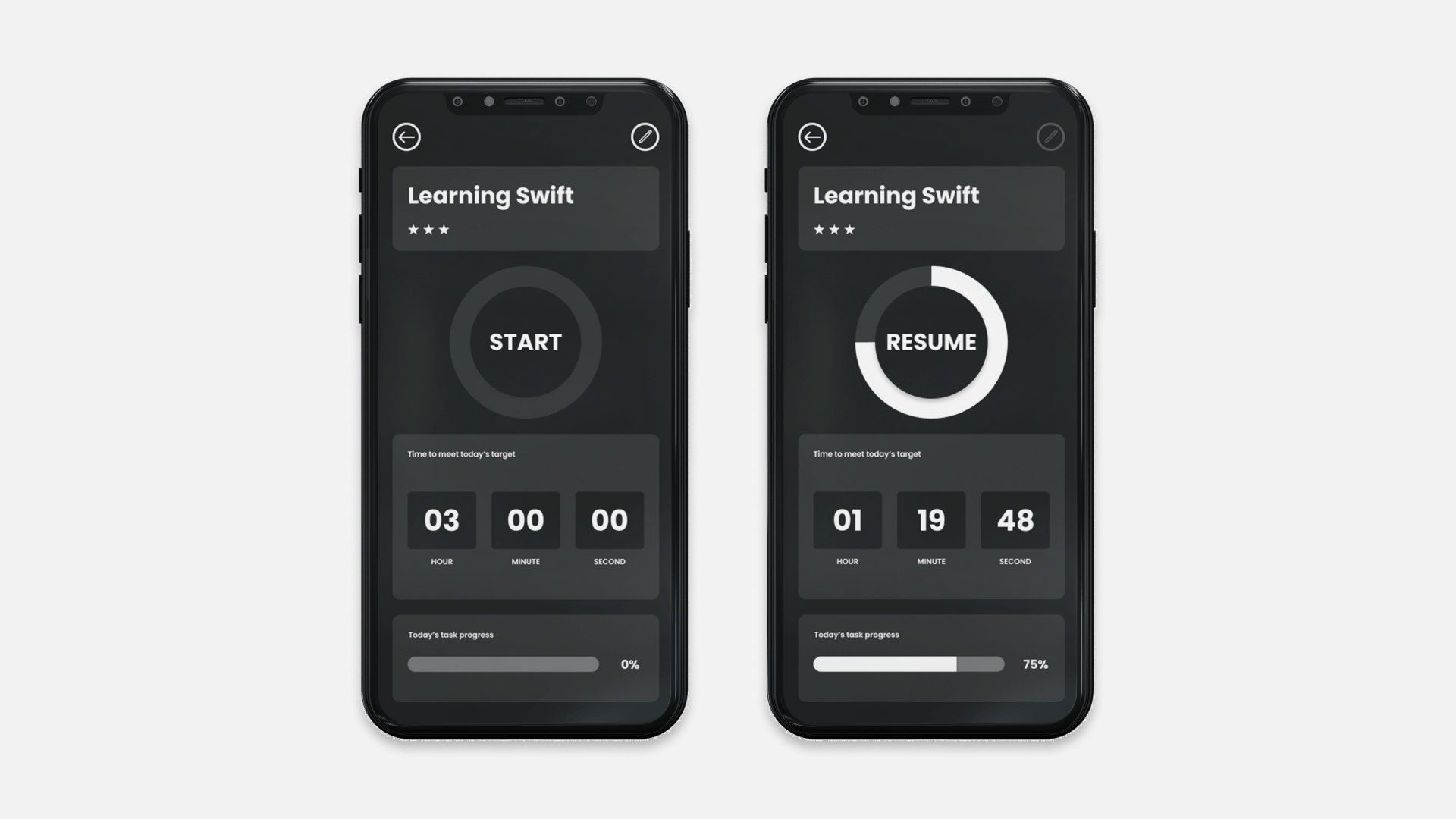
As users complete tasks every day, the app would monitor and record their performance. The app would provide a daily, weekly, monthly, and yearly report on the user's performance, allowing the user to have a deeper understanding of how they spend their time. It highlights which tasks the user has spent the most time on and which ones the least.

When it comes to user-centric design, it is crucial to consider all users, including those with different needs. Therefore, I created a light version of the app that is accessible and easy to use for all users.
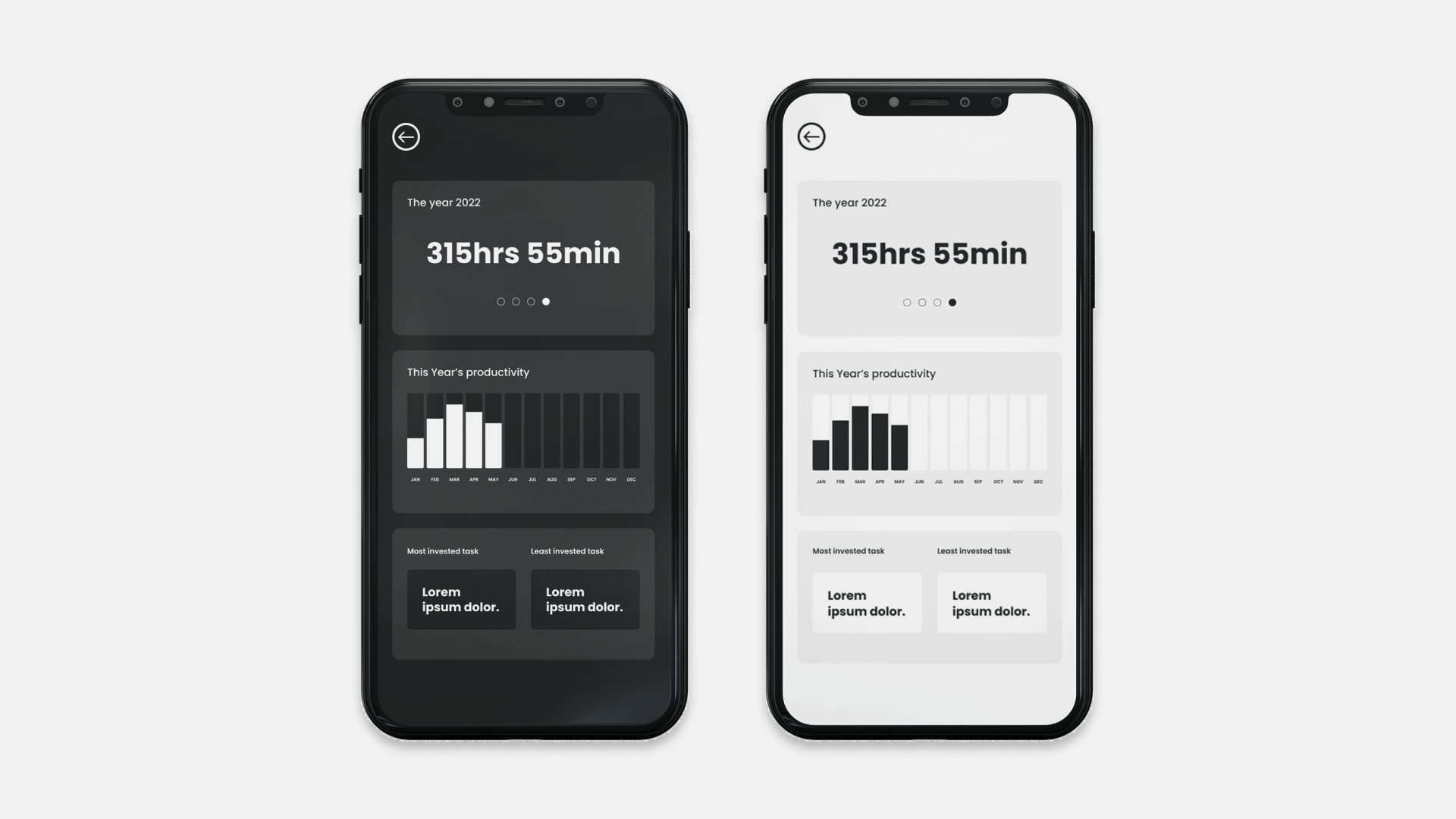
Using Figma, I created a high-fidelity prototype to gain a better understanding of the app's user experience. I conducted constant usability testing to identify opportunities to enhance the user's experience.
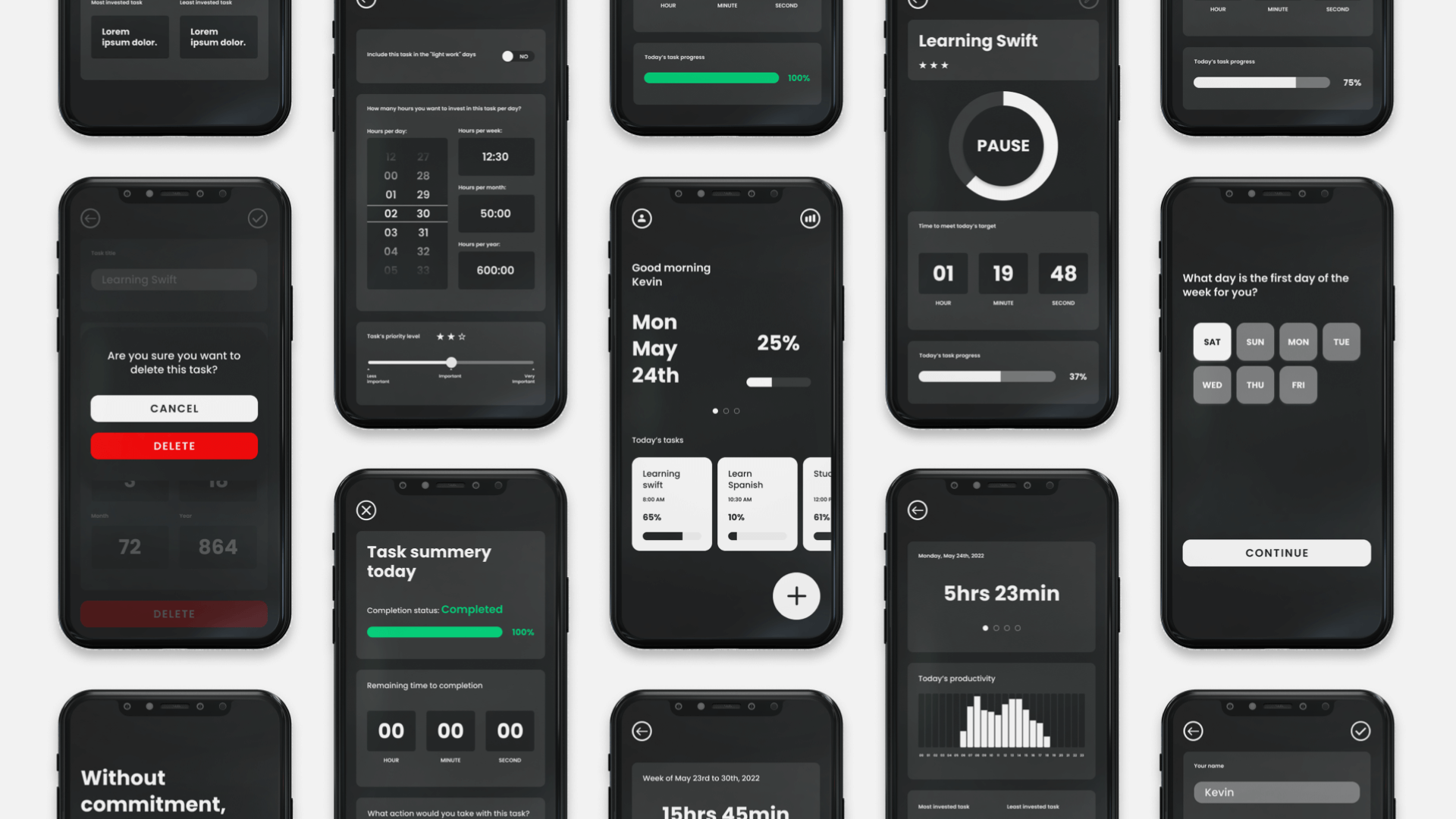
Link to High-Fidelity prototype (First time user) - iPhone 13 Pro
Link to High-Fidelity prototype (Multiple time user) - iPhone 13 Pro
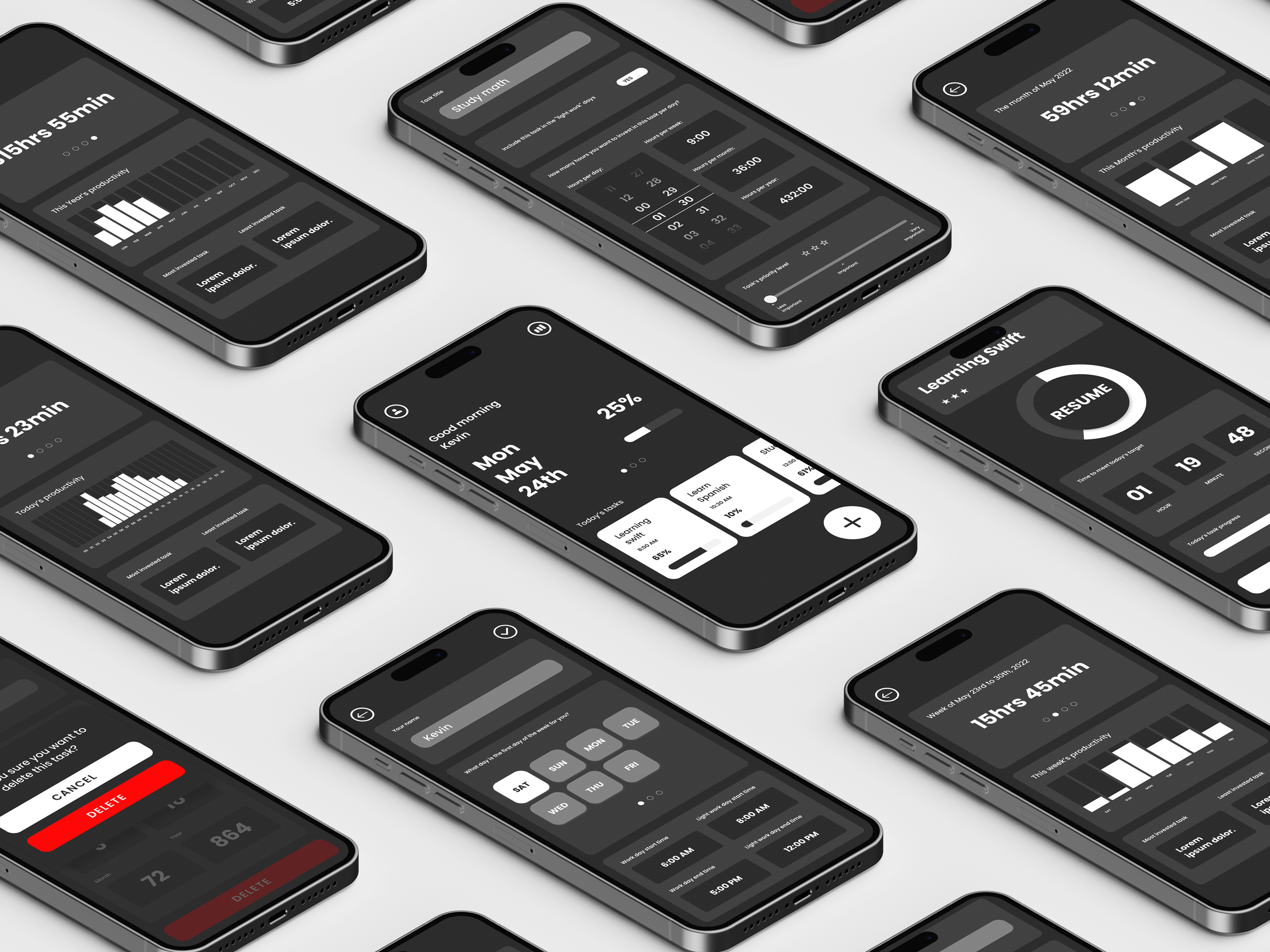
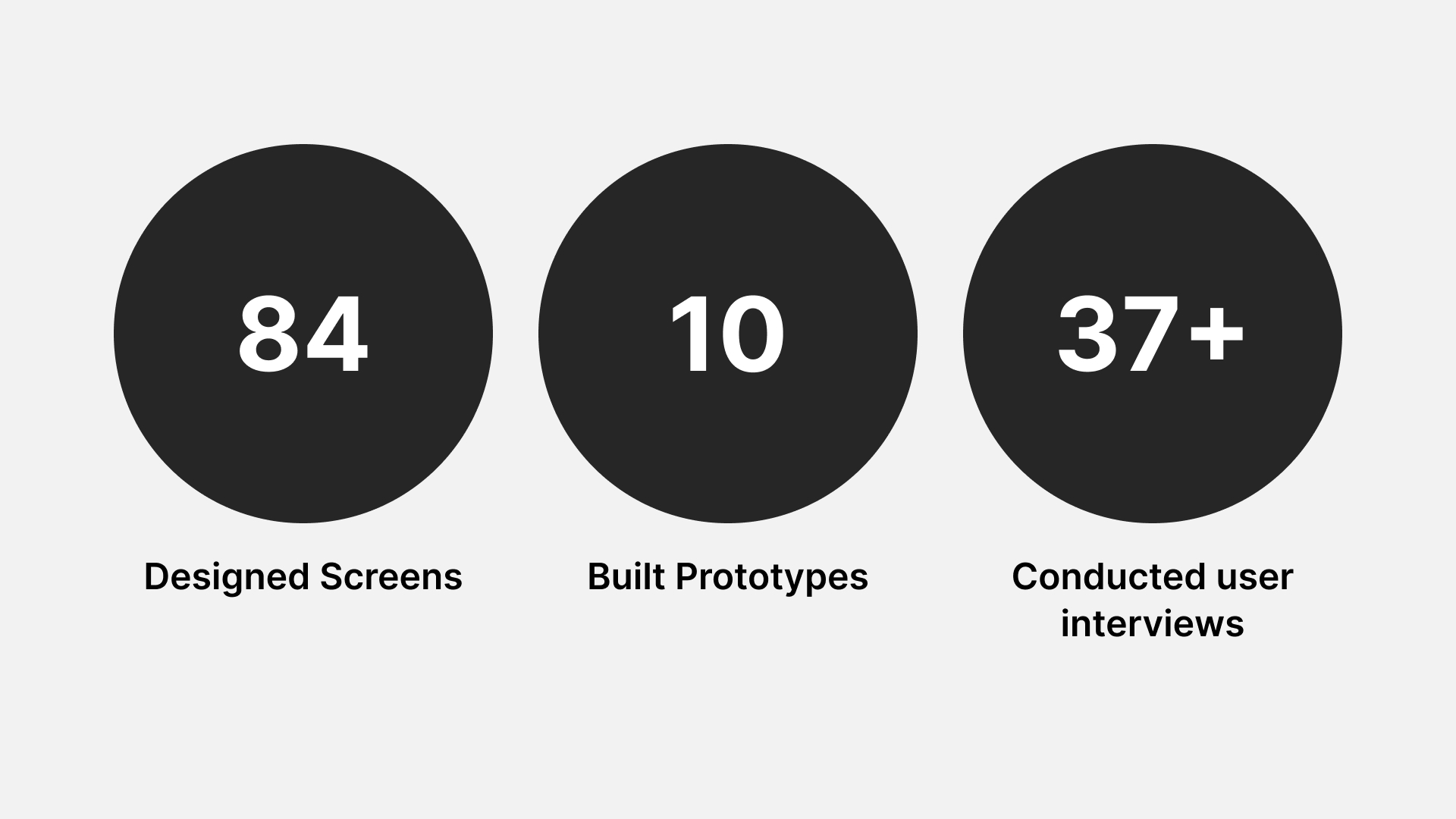
A total of 84 screens have been designed, 10 prototypes have been built, and over 37 user interviews have been conducted.
This app allows people to develop new habits, no matter how complex. By investing enough hours in any task, anyone can learn and potentially master that task. The Habitara app assists people in staying consistent in investing hours in the habits they wish to adopt. The app is currently in the development phase and should be available on the app store soon.